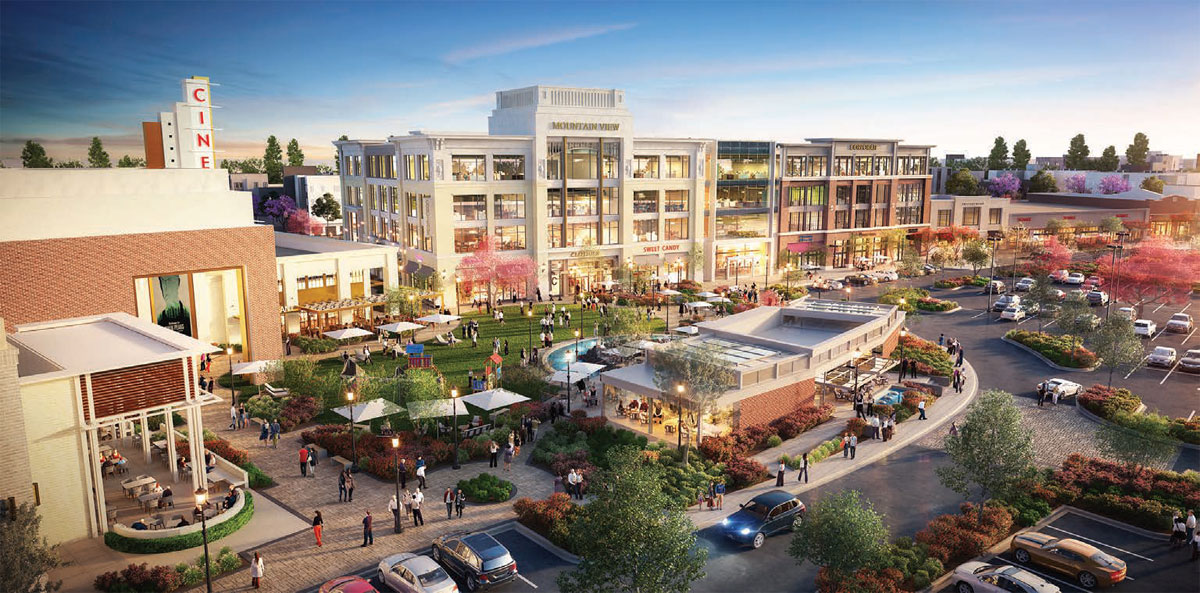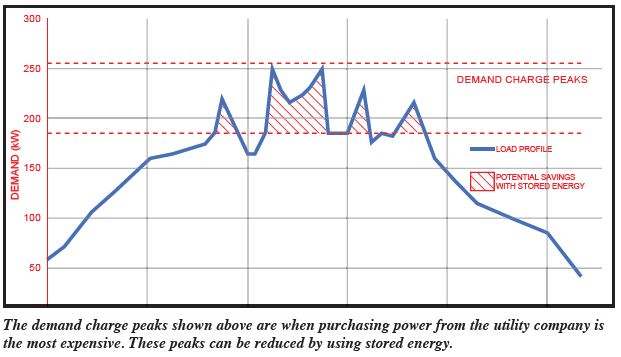What Pandemic? Even though some construction projects were delayed or canceled in the past year, all phases of the industry have seemingly returned to pre-pandemic levels

By Frances Johnson
It is hard to find any part of life that hasn’t been changed by the coronavirus pandemic — from the way we work, to the way we shop, to the way we see (or don’t see) our family and friends.
But one thing that didn’t seem much phased by COVID-19? The construction industry in Utah.
While Utah-based construction firms saw some projects get delayed or disappear altogether early in the pandemic, most are now enjoying a workflow that is back to pre-pandemic levels — and better, in some cases.
“We feel extremely fortunate that our offices are located where they are, because we have seen nothing but growth,” said Randy Steed, the outgoing president of Steed Construction. Steed Construction does business in 16 states, with main offices in Utah, Idaho and Texas. “We were nervous at the beginning of the year (2020) because everyone was panicking, but it turned out to be a decent year for us.”
A high demand for residential construction is one of the main engines driving Utah’s ongoing construction boom. Already experiencing a housing shortage before the pandemic, an influx of new residents from California and other neighboring states during the pandemic has only intensified the need for more housing in Utah, especially along the Wasatch Front.
According to Building Salt Lake, a local website focused on Utah real estate development, there are 1,873 residential units currently under construction in a few-block radius of downtown Salt Lake City alone.
“Developers are feeling good about Utah and we see a lot of projects going forward,” said Dennis Cigana, executive vice president of preconstruction and business development at Jacobsen Construction. “People felt strongly that we would come out of this pandemic and that Utah would continue to be a place people wanted to be.”
But while construction firms in Utah are enjoying a happy ending to the pandemic story — and the industry is much stronger here than in many nearby regions — that success didn’t come without a few bumps.
Steed Construction, for example, had several large hospitality, restaurant and school construction projects put on hold at the beginning of 2020. The company was preparing for layoffs, Steed said, when a Paycheck Protection Program (PPP) loan allowed it to make payroll and keep everyone employed.
Projects in other sectors, including manufacturing facilities, warehouse distribution locations and car washes, kept them going until their delayed projects came back online.
“By the time that PPP money ran out, we started seeing a pickup in the industry and it’s been picking up ever since,” Steed said. “All in all, we had growth last year over 2019 and we started this year with more backlog than the year before.”
The pandemic experience at Jacobsen Construction was very similar, Cigana said. Deemed an essential business by the governor, Jacobsen was able to keep active construction sites open — with new pandemic safety protocols in place. But Jacobsen also had several projects in the pre-construction phase get put on hold at the beginning of 2020, including a mountain resort project being financed by a New York-based developer, as well as an office tower in downtown Salt Lake City and a large housing project.
“We didn’t know what to expect,” Cigana said, “but we knew things were starting to slow down. We realized, OK, we are going to see a shift in the marketplace.”
In order to prepare for what might be coming, Jacobsen leadership took a look at the company as a whole and restructured some overhead costs based on their new revenue projections. But a total industry crash never came.
So, what made the difference?
One factor, Cigana said, was the strength of Utah’s construction industry — and economy as a whole —going into the pandemic. Developers were confident there would be a demand for their projects once the pandemic was over, especially multi-family residential developments.
“When you look at the other regions nearby and around the country, I think Utah fared really well in terms of the pandemic,” Cigana said.
Another factor that supported ongoing growth was the state’s response to the pandemic itself, said Steed. Utah had a proportional response, he said, with a realistic approach to lockdowns and business closures.
That made it easier for many companies — including construction firms — to keep doing business here, he said. The state’s response to the pandemic also made Utah an attractive destination for people trying to get away from more restrictive responses in nearby states like California, Washington and Oregon. That influx of new residents — both temporary and permanent — increased the already high demand for new construction in Utah, especially in the residential sector.
“We are seeing both Idaho and Utah benefiting from people moving here,” Steed said, “partly because they are better places to live and also because people are now working from home so they can really live anywhere.”
That new residential demand ultimately trickles down to demand for other kinds of new construction, including office and retail space, and that demand is coming back stronger than ever.
“Just in the last few months, people are starting to see the light at the end of the tunnel and the phone hasn’t stopped ringing,” Steed said. “We are expecting major growth.”
Jacobsen Construction is also seeing many of their stalled projects coming back online, especially government and public-sector projects. They are expecting steady growth through 2021 and 2022, at least, Cigana said. But that growth is already coming with some pandemic-induced growing pains.
Global supply chains were majorly impacted by the coronavirus pandemic (remember when there was no toilet paper?), and that includes construction materials. Many suppliers — anticipating a construction slowdown — let their inventories deplete, Cigana said.
Other suppliers, such as lumber mills in the Pacific Northwest, had to shut down entirely under their states’ pandemic restrictions, Steed said. That means many necessary materials are unavailable, and the ones you can find are more expensive than ever. There was a time within the past year when the price of lumber for a project Steed Construction had underway downtown was going up by $50,000 a day.
“There’s almost no material that hasn’t gone up and I’m not sure it’s going to come down in the near future,” Steed said. “There’s a lot of pent-up demand.”
Jacobsen Construction has experienced similar shortages and price hikes.
“We’ve been tracking it and making our projects aware of it and trying to be proactive. It’s different from when we used to be able to just know the supply chain was going to deliver what we needed,” Cigana said. “The supply chain has really impacted our material costs. Making sure our designs stay in budget will be crucial moving forward.”
These higher prices don’t just make it hard for construction firms and their subcontractors to stay on budget, Steed said. They also make it harder for consumers to afford new construction— an especially worrying trend in the residential market where Utah home prices were soaring even before the pandemic.
“It’s just killing the public,” Steed said.
It could also be setting up Utah’s construction industry for a dip — or crash.
“So what I am worried about now is that this is unsustainable,” Steed said. “The industry will come roaring back and then there will be a dip. It’s a bubble.”
Companies can protect themselves by avoiding debt and watching the trends so they can be proactive instead of reactive. For example, Steed said, if you see residential demand start to dwindle, demand for commercial construction will not be far behind.
Adapting to new trends — for example, changes in the way offices are designed as a result of the pandemic — can also help construction firms future-proof their business and profits, Cigana said.
And even if there is a dip in the construction industry in the future, Steed added, Utah will most likely be protected from the worst of it then, just like it has been now.
“You are seeing construction growth at every level,” Steed said. “We are feeling pretty bullish.”
The effects of Utah’s growing population, the soaring price of construction materials and COVID-19 on Utah’s builders and investors
By Steve Diamond
 Utah’s strong economy and robust job market are attracting people to the Beehive State and keeping generations of Utahns here as well. As a result of the state’s growing population, housing is in high demand. However, supply is low. And despite apartment complexes, subdivisions and houses going up across the state, it will still be difficult to satisfy the demand, especially when the population is only expected to keep growing and the construction industry continues to face COVID-19-related challenges.
Utah’s strong economy and robust job market are attracting people to the Beehive State and keeping generations of Utahns here as well. As a result of the state’s growing population, housing is in high demand. However, supply is low. And despite apartment complexes, subdivisions and houses going up across the state, it will still be difficult to satisfy the demand, especially when the population is only expected to keep growing and the construction industry continues to face COVID-19-related challenges.
First things first, though: How much housing does Utah need to keep up with the fundamental levels of demand?
In March, Bank of Utah hosted a Real Estate Economic Forecast event, featuring Utah brothers and real estate brokers Neil Walter and Jon Walter of ARTI Academics, who shared their insight and analysis on the Wasatch Front, Southern and Northern Utah real estate markets. They included population projections by the Utah Population Estimates Committee showing growth for Salt Lake, Utah and Washington counties through 2025.
Salt Lake County’s population is expected to grow from approximately 1.18 million people to 1.25 million, which would require 4,800 housing units to be built each year through 2025. Utah County’s population is expected to grow from approximately 679,000 to 768,000, requiring 5,000 housing units to be built each year. And Washington County’s population is expected to increase from approximately 187,000 to 219,000, requiring 2,700 housing units. That’s 12,500 units per year through 2025, just for three counties — and those figures, according to the Walters, are conservative.
According to the Utah Population Estimates Committee, Weber County is also expected to grow from 260,000 to 286,000 people through 2025, and Davis County’s population is forecast to grow from 355,000 to 386,000. Considering that the average size of Utah households is 3.1 persons, that means 1,677 new housing units will be needed yearly through 2025 in Weber County and 2,000 will be needed per year in Davis County.
It’s important to note these projections were generated pre-COVID and the pandemic has brought up an entirely new dynamic: People like working at home and have discovered that they don’t have to live in the same community where they work.
“People are starting to think, ‘Where do I want to live?’ For example, they may say, ‘I want to keep my San Francisco job and salary, but I want to live in Beaver, Utah, where I like to recreate,’ and they’ll be able to do that,” Jon Walter explained. That’s likely to be yet another factor in Utah’s population growth.
As more and more discussions revolve around soaring population projections and the need for additional housing inventory, it would appear to be an opportune time to build or invest, particularly with current historically low interest rates. However, with COVID-related supply chain delays and materials on back order, there is a great strain on building schedules and costs, which is not ideal for builders and investors.
In the banking industry, construction loan servicing specialists talk to builders daily when they call in to access funding through disbursements, or draws, and they often hear about material and product shortages. For example, bathtub surrounds, as of mid-March, were six weeks out. With builders running on already tight schedules to satisfy loan terms, these delays are worrisome for everyone involved.
The shortages and backorders are also presenting other new challenges, with builders being asked by materials vendors to pre-pay for items they typically don’t pay for in advance. When builders request a disbursement or draw from a lender, they must provide invoices and receipts for the work performed during the draw period. In the past, pre-payments weren’t typically approved for disbursement, but now it’s something builders and lenders find themselves working through together.
Even more disconcerting is that the price of construction materials is skyrocketing. According to the National Association of Home Builders, lumber prices alone jumped 180 percent since last spring. Nationwide, “this spike has caused the price of an average new single-family home to increase by more than $24,000 since April 17, 2020. Similarly, the price of the average new multifamily home has increased by nearly $9,000 over the same period due to the surge in lumber prices,” the trade organization recently reported.
Commercially speaking, this can become problematic for developers and builders who get their projects appraised using the income approach, a methodology that estimates the market value of a property based on the income of the property. Because it relies on the income of the property, it’s most often used when appraising multifamily homes such as apartment complexes or duplexes. It becomes difficult when the costs begin to exceed the income value of the property.
Can builders and, ultimately, investors and homeowners, balance the opportunities of population growth and mortgage rates with the threats of rising costs and decreasing access to supplies?
The answer is yes, with the help of a community banking partner. Because community banks play a vital role in funding commercial and residential building, and because they have strong ties to and knowledge of their communities, lenders are deeply aware of the pricing trends, challenges and requirements to get construction financing in this unique climate.
Lenders keep tremendous amounts of data that can help developers and builders know what to expect, know if and when they’re being taken advantage of, what average prices are in the areas where they’re planning to build, and if a project is too risky to get appraised properly. This data can help developers and investors make logical decisions and assure their projects are structured for profitability. On the residential side, lenders can also help homeowners know if the prices they’re being quoted are in line with other projects in the area or are overpriced.
A quote from a recent article from the American Bankers Association saying, “Construction lending pumps life into American communities,”and a quote from Neil Walter saying, “Population is the single most important driver to economic activity,” sum up how crucial these two factors are to us all. Population growth and construction lending are not just important to builders, developers and investors, they’re important to every single person in the state of Utah, as we all work to keep our state’s economy strong and to offer a high quality of life for those who have lived here for years and those who are looking to move here.
Steve Diamond is a senior vice president and commercial lending relationship manager for Bank of Utah in Ogden. Bank of Utah has 17 full-service branches across the state and trust teams in Ogden and Salt Lake City.
Vogel: Large or small, mixed-use development projects create foot traffic, which is the key to their success

CenterCal Properties' Mountain View Village mixed-use project in Riverton
By Brice Wallace
Rick Vogel has been involved in several mixed-use development projects with massive scale. One’s focus was to create an economic restructuring in China. Another used a new baseball stadium to spur new neighborhoods in downtown San Diego. He’s now working on a $1 billion project in downtown Los Angeles with a goal of revitalizing the city’s urban core.
But the senior vice president for The Related Companies says mixed-use projects don’t have to be monstrous.
“I believe in dense environments,” Vogel said during a webinar about best practices in developing large-scale mixed-use projects, presented by ULI (Urban Land Institute) Utah. “You could have a mixed-use project that is very low density. Just go to any suburban community with an effective town center and you’ll see a great example.
“All you need in your town center is single-story storefronts that attract great retail, restaurants and entertainment uses, with some residential up above it to make sure there’s enough foot traffic to keep the sidewalks busy.”
That foot traffic is key to making any mixed-use project work, regardless of its scale, he said, stressing that residential components drive that traffic.
“In my opinion, the best spaces around the country are the ones that have a vibrant feel, which means you’ve got to have people living there. Residential is going to be key to this. You know, you’ve got to be able to create enough supply in residential to accomplish the demand you need to get that foot traffic going.”
Office space is less important because it is used only during the day but “gone” at night and on weekends, “but you also need to account for the fact that people like walking to work now,” he said.
Vogel likened the challenge of developing a mixed-use project to a puzzle or Rubic’s cube. Developers need to solve the puzzle about having people “on the ground, 24/7,” he said.
On the massive project in China, his company studied peak demand at different times of the day for different types of people: hotel visitors, office workers, residents, shoppers and diners among them. “Let that daily foot traffic demand be the backbone of your design for what you’re creating,” he suggested. “Start with that.”
The components of a mixed-use project — retail, residential, office, hotel, entertainment — must be complementary, compatible and mutually supportive, he emphasized.
“I’ve done a lot of stand-alone projects as well, but the real art of mixed-use is in integrating various uses to try and create a synergistic effect,” Vogel said.
A project with great retail elements can attract residents. One with a lot of office space can attract retail. One with restaurants can attract hotel patrons.
“And if all of them work together, [they] create a 24/7 environment that spans the otherwise quiet hours of a project to create a really special place,” he said.
If the mix is right, he added, “you then get what would we simply call a synergistic effect where you can achieve higher than market rate compared to the individual components and standalone buildings in the form of rates and sales proceeds.”
During his hour-long presentation, Vogel also touched on the need for flexible zoning because elements of projects often change to meet market conditions, the importance of making projects a public-private partnership, the use of design elements to tailor projects to be more attractive, the importance of development agreements to protect developers from future changes in politics and regulation, and the need for public input on projects.
Large projects often generate public controversy because of their scale or sometimes the overarching goals they want to achieve, he said. But getting the affected neighborhood involved early can reduce the public blowback. The large project in Los Angeles has had zero public opposition because of that early input, he said.
“It sounds risky, and it is, but at the end of the day you’ll be happy with the product,” he said.
As for ideas about what projects fit and would work in Salt Lake City, Vogel suggested developers look at ULI studies of different cities and visit those cties.
“I would encourage everybody in Salt Lake who’s doing this for the first time, get on a plane after you’re vaccinated and fly around the go visit some of these great town centers,” he said, which often have “really creative solutions” but “not huge scale.”
“Single-story retail storefronts, two or three levels of residential on the top, and go see what they did to make it work. It has everything to do about the scale, the thoughtfulness, the design and thinking about the pedestrian environment.”
FORCE MAJEURE and other relief options for contractors during COVID-19

By Tyson Horrocks, Dirk Gaspar & Michael Wadley
There is no doubt that the COVID-19 pandemic has had an unprecedented impact on contractors and businesses throughout the world. In response to the virus, we have seen many countries and their local jurisdictions issue a variety of emergency declarations and orders to slow the spread of the virus. In the United States, most of the emergency orders that have impacted its citizens’ daily lives have come from state and local governments. Many of these orders, such as limiting the occupancy of establishments or closing certain industry sectors altogether, have directly or indirectly impacted most businesses.

If a global pandemic and government emergency declarations make it difficult or impossible for a business to meet its contractual obligations, what legal relief does that business have? Can the business assert a “force majeure” defense even if its agreements are silent on the matter? For contracts in the United States, the answer is generally no.
Force majeure events are generally defined as “acts of God” and typically include wars, terrorism, epidemics and pandemics, major weather events and other events that are unforeseen and/or unpredictable. How jurisdictions treat force majeure events with respect to private contracts varies throughout the world.
Most of Latin America and Europe are “civil law” countries, where the nature and extent of laws are predominantly based on codes and statutes. In such countries, the law typically provides remedies for force majeure events in private contracts. Where a contract does not specifically address force majeure, the law often implies such a provision and a party adversely affected by the force majeure event may be able to obtain relief from the performance of the contract.
The United States, Canada, United Kingdom and Australia, on the other hand, are “common law” countries. Although these countries also have codified laws, published judicial decisions interpreting the laws are of significant importance. A primary distinction between civil law and common law countries is that unless a particular common law jurisdiction has codified force majeure relief, the law will not imply it in private contracts.
Because the United States is a common law jurisdiction, force majeure relief is not implied in private contracts. Relief from force majeure events will only be afforded to a party to a contract where that contract has specifically provided for such relief.
In addition to common-law precedent, the United States Constitution provides a substantial barrier for state or local governments to compel the inclusion of force majeure relief in a contract that does not otherwise address it. Article I, Section 10, Clause 1 of the United States Constitution states that: “No State shall ... pass any ... Law impairing the Obligation of Contracts...” This provision, known as the “Contracts Clause,” prohibits a state from passing laws that retroactively interfere with private contracts. As such, emergency orders or other administrative actions by state and local governments regarding COVID-19 are generally prohibited from interfering with the substantive terms of contracts between private parties and providing force majeure relief in contracts that do not contain force majeure language. Instead, such emergency actions are generally limited to procedural matters such as the timing to bring civil actions to enforce the terms of the contracts. Of course, we have seen several states implement far-reaching emergency orders to address COVID-19 (e.g., the temporary halting of all eviction and foreclosure proceedings), which may retroactively impact private contracts and thus violate the Contracts Clause.
Other emergency orders, such as orders by state governors suspending certain statutes of limitations, arguably violate the principle of separation of powers since the establishment and extension of statutes of limitations are generally within the sole purview of a state’s legislature. These are unprecedented issues that will undoubtedly be the subject of future litigation, including review by the states’ and/or United States Supreme Court.
Many construction agreements, commercial lease and loan agreements, and other business contracts are silent as to force majeure events. As can be seen above, the law in the United States will not imply force majeure relief in these contracts and business owners will still be responsible to comply with the contracts notwithstanding the occurrence of an unforeseen event such as COVID-19. This can leave a business owner in the unfortunate position of having delay damages, significantly decreased revenue or no revenue at all if the business is forced to shut down, while still having to make, for example, payroll, monthly rent or loan payments. Although such a situation may seem dire, there are few contractual defenses that may be available to business owners impacted by a force majeure event.
One defense, known as “frustration of purpose,” can discharge a party’s contractual obligation where performance remains technically possible, but the expected benefit of the contract has been destroyed by the unforeseen event. As an example, if a hotel (required to make monthly mortgage payments) in a tourist-dependent area may remain open despite state COVID-19 stay-at-home orders, these orders may have nevertheless essentially halted tourism and the prospect of any reliable stream of revenue for the hotel during the closure. In other words, the value of the hotel’s continued operations has been effectively destroyed, thus giving rise to a frustration of purpose defense if it is not able to pay its monthly mortgage.
Another defense, “impossibility” or “impracticability,” is available to a party whose performance under a contract is made impossible or highly impracticable by the force majeure event. For example, many commercial leases require businesses to remain open on certain days and times where the rent obligation includes a share of the businesses’ revenue. If a business is subject to a mandatory closure by the state as a result of COVID-19 (e.g., gyms, salons, etc.), it would be clearly impossible for that business to comply with the lease. In such a circumstance, that business may be able to assert the defense of impossibility to excuse its non-performance.
Of course, whether the above contract defenses apply is highly dependent on the particular facts of the case. Moreover, these defenses are in no way certain to be successful as any litigation can involve substantial risk, including the prospect of a business having to close down and/or seek bankruptcy protection. A business owner may be able to negotiate differing terms with the creditor. Whether the contract involved is a lease, loan or other business contract, many creditors have recognized the wide-ranging impact of COVID-19 and are often amenable to working with the business owner to provide some relief. Of course, the nature and extent of relief available will depend on various factors and the leverage, if any, the business owner may have. Regardless, most creditors are now recognizing that working with impacted business owners is in their best interest since getting something now is often better than ultimately getting nothing at all.
If you haven’t recently, everyone should test their agreement forms to ensure they will not be infected by COVID-19 and its adverse effects.
Tyson Horrocks is an employment attorney at Holland & Hart LLP in Salt Lake City and serves as legal counsel for Associated Builders and Contractors of Utah. He counsels employers on the full spectrum of issues and challenges they face to efficiently and effectively manage their workforce .
Dirk Gaspar is a construction attorney at Holland & Hart LLP who focuses his practice on all aspects of construction law, including contract negotiation and drafting, construction defect litigation, disputes and liens.
Michael Wadley is a construction attorney at Holland & Hart LLP. He represents construction companies and owners in project development and complex litigation and commercial, residential, gaming, stadium and transportation projects, large or small.
This article is designed to provide general information on pertinent legal topics. The statements made are provided for educational purposes only. They do not constitute legal or financial advice, nor do they necessarily reflect the views of Holland & Hart LLP or any of its attorneys other than the author. This publication is not intended to create an attorney-client relationship between you and Holland & Hart LLP. Substantive changes in the law subsequent to the date of this publication might affect the analysis or commentary. Similarly, the analysis may differ depending on the jurisdiction or circumstances. If you have specific questions as to the application of the law to your activities, you should seek the advice of your legal counsel.
Construction and cloud computing
By Bahar Ferguson
In an industry like construction, there is a need for organization and management in every project process step. As technology advances, cloud servers and software allow teams to communicate anywhere and at any time and the right tools help teams become more productive.
How Cloud Tools Help Construction Companies
 It’s no secret that construction projects are collaborative processes. Different groups of people — from engineers, architects, project managers and construction workers — all need to communicate to be successful.
It’s no secret that construction projects are collaborative processes. Different groups of people — from engineers, architects, project managers and construction workers — all need to communicate to be successful.
When a construction company takes on multiple projects, organizing data, staying updated and opening communication lines from every team member is essential to project success. Construction companies need software that they can access anywhere, anytime and from any device.
Construction software tools within the cloud offer a solution by allowing every team member to update projects, see progress, communicate and help everyone stay on track as progress continues. These tools help organize everything from budgets and finances to building design and scheduling.
Programs Construction Companies Use
Construction companies rely on these digital solutions to help them build better and more efficient projects. Unlike other cloud tools, these solutions aim to help construction companies specifically. They come equipped with many different features to support the construction industry in organizing information, updating progress and building better projects. Many of these tools perform similar functions. Construction teams should consider how their team communicates and how they like to run their projects to decide which solution to implement.
CoConstruct is a construction management software trusted by 100,000 building professionals in the residential construction industry. This software is mainly for home builders and remodelers.
CoConstruct helps teams lay the groundwork for a project. It features built-in project estimating, advanced scheduling, job log, invoices and budget tracking. As an all-in-one management software, teams use it to coordinate and communicate every step of the project.
With CoConstruct, teams can build templates to speed up processes and use estimations to increase the project’s accuracy. Teams benefit from having a central database for all of the information involving specific projects. This data becomes easy to share and communicate with the entire group with CoConstruct.
PlanGrid is another software solution for construction companies from over 90 countries. PlanGrid focuses on being a mobile solution for its clients. With it, contractors, architects and owners have access to project updates in real time. PlanGrid allows any team member to update and manage important information like blueprints, specs, pictures and field reports — all from any mobile device.
Priding itself as a reliable mobile solution, it allows construction teams to stay updated all the time, even with quickly developing projects. Teams will save time communicating and solving problems faster because everyone is always informed about how projects are progressing. In the world of cellphones and laptops, construction teams need software that moves as fast as they do.
Autodesk is software that helps construction teams build and maintain an energy-efficient building. It’s a tool that prepares teams in the design and planning phase of a project. Autodesk features aid architectural design, electrical planning, plumbing, structural engineering and even construction itself, focusing on energy. Teams will benefit from a single platform that manages schedules, provides structural analysis, and creates detailed reports.
Clients love the ability to view building plans in 3D. Team members can make design changes and the 3D model design will automatically update with those changes.
Construction teams who need more organized planning before projects can use Autodesk to prepare more efficient building processes as Autodesk will map out all the information a team needs to begin construction.
ProCore is a versatile cloud tool that offers teams a project management solution from the beginning of a project all the way to project closeout. With ProCore, teams can plan, organize and manage projects, resources and financials for a project. ProCore App Marketplace has over 150 partner solutions integrating with ProCore that construction companies choose from and use. Teams connect the tools they need from the marketplace, adding features along the way that improve the building process.
ProCore is a team’s tool for collaboration. It acts as a database for all of the essential information required for a project, including team directories. It focuses on keeping construction companies updated and organized as they work and helps teams stay on the same page.
Ultimately, tools like ProCore help workers stay on task and informed about project developments. Teams can choose from the applications that ProCore has for the features their projects need, making it a highly adaptable software for any sized construction company.
RedTeam Software is designed for commercial construction management. It is a cloud application developed by contractors for construction. Like other cloud applications, Red Team makes data available for all team members anywhere. Teams use RedTeam for field reports, managing construction processes, performance management and even financial controls.
With cloud tools, teams can upload progress for other members to see and also view the data that other members have uploaded to the same cloud. Cloud is a versatile remote tool for teams in every industry.
CMic provides field solutions for construction firms to manage financials, project management and organizing content assets. CMic holds all of this data onto one platform that team members can view and update. CMic gives teams real-time data for accounting and budgets for their projects. It helps organize schedule changes when a firm takes on multiple projects. Currently, CMic services small and mid-sized firms and also services specialty contractors.
Teams utilize CMic to optimize their financial resources and keep teams updated about project developments. Scheduling, budget and resources all become concerns when a company takes on more projects. Team members can input data into CMic and use it to distribute adjusted schedules and manage finances.
Buildertrend Construction Software is another cloud-based solution with over 1 million users from around the world. Their clients include homebuilders, contractors and remodelers.
Buildertrend features help companies with estimates, document management and scheduling. As software, its focus is to simplify the construction process, so construction teams work more efficiently and produce better projects. The software is compatible with QuickBooks and Xero. Also, Buildertrend gives its clients a passionate customer service team for questions and troubleshooting. The software also features a client communication tool for construction companies to keep their clients informed.
Since Buildertrend is cloud-based, teams can manage progress from anywhere with a cloud connection. Teams can focus more on design and productivity rather than managing resources and assets.
Using Cloud Tools and Software
Cloud tools and software can help construction companies plan and execute projects with greater efficiency. These tools focus on helping construction companies in particular, and so their features focus on the needs of the construction industry.
When a construction team looks for a new tool that the entire team will use, they must first look at what tools their team needs. They should focus on how their team likes to communicate and how they like to work on projects. Though cloud tools perform many of the same functions, some focus on specific areas that make them ideal for different teams.
Teams can select a cloud tool that complements how the team works rather than a tool that will require the team to change how they work and communicate.
As you can see, cloud computing was meant for the construction industry. With the need for collaboration on the go or at job sites, the cloud model is a perfect medium to allow your team to feel connected, no matter where they are.
Bahar Ferguson is the president of Wasatch I.T., a Utah-based, locally owned outsourced IT company.
Raising The Level Of Respect And Appreciation For Humans In Hardhats

By Synde Jacques
Chichén Itzá near Cancun, Mexico, is one of the most impressive sites of all of the Mayan ruins, a World Heritage site that receives more than 1.5 million visitors each year. Think of the incredible humans that designed and constructed these architectural wonders without the benefit of modern construction equipment. Can you even imagine? They must have been so smart, innovative and imaginative.
 And there are also the modern amazing wonders like the Burj Khalifa skyscraper in Dubai, the tallest manmade structure in the world; it is twice as tall as the Empire State Building. An average of 12,000 workers per day worked on that building for six years.
And there are also the modern amazing wonders like the Burj Khalifa skyscraper in Dubai, the tallest manmade structure in the world; it is twice as tall as the Empire State Building. An average of 12,000 workers per day worked on that building for six years.
But just as impressive to me are the hard-working people who daily build our communities for us. I have been privileged to work with many modern construction workers who I admiringly refer to as “humans in hardhats.” They may not be building skyscrapers, but they are spending long days and often nights building our roads, bridges and buildings and most of them are doing it without a college degree. Just because they work hard, it doesn’t mean they aren’t smart.
Often, when I am having conversations with those that work in construction, I hear positive things like, “I love working with my hands,” “I love being outside,” “I love building things for others to enjoy,” or “I love that the work I do is something different every day.” But then it makes me sad when I also hear, “The worst part about working in construction is that my neighbors and some of my friends look down on me because they think I’m not smart enough to do something else.” I even know successful owners of construction companies that don’t feel like they “measure up” in their own neighborhoods just because they don’t have a college degree.
I believe that it is time to reevaluate how we think about the individuals who build our communities and raise the level of respect and appreciation for all that they accomplish.
Do you enjoy:
- Taking a shower?
- Having a toilet that flushes?
- Driving on paved roads and structurally sound bridges?
- Turning up the air conditioning?
- Having schools, offices, churches and hospital buildings?
- Playing or watching football, baseball, volleyball, golf or pickleball?
All of these comforts and many other elements of our everyday lives are made possible because of blue-collar workers. It’s not right that these hardworking people are often looked down upon.
A recent news story reported on the discipline strategy used in a local high school. It was basically a three-strike system. When a student receives that third strike, as a punishment, they are sent to the CTE (career and technical education) class to learn carpentry skills. We should not be teaching our students that it is a punishment to learn skilled trades.
Instead, we should respect and appreciate those who build things with their hands, and we should encourage our students who don’t fit the traditional college model to learn carpentry or plumbing or cosmetology or culinary skills.
Here are a couple of things you can do to help raise respect for our “humans in hardhats”:
1. Reexamine your own biases and beliefs about those who work in construction and commit to being more thoughtful and appreciative of all the things that they build that you enjoy.
2. Help us break the all-too-popular paradigm that people can only be successful if they have a college degree. Each individual has different strengths, there is not one right path for everyone and there many ways to build a successful life.
Of course, some career choices can only be obtained with a specific college degree. But learning a skilled trade can even help you pay for college, if you participate in an “earn while you learn” program that can provide skilled trade training and pay college expenses with a good job while attending college. Technical schools can be a great option to earn while you learn. My youngest daughter completed a nine-month pharmacy technician program while in high school and is earning a great salary while she attends college.
Another option is to enter into an apprenticeship program. The construction industry estimates that there is currently a shortage of 1.5 million people needed to fill essential positions, and these jobs are available and waiting for workers. If a high school graduate chooses construction and “on the job training” over attending a traditional college, in four years, their average salary will be $10,000 more than the average college graduate and they will bypass the $38,000 student debt with which the average college student starts their career.
There are many lucrative careers in construction. Would you be surprised to learn the average construction superintendent makes $10,000 per year more than the average computer programmer?
As I have worked in the construction industry, I have asked others why we can’t get more workers into construction. During a conversation several years ago, one of my good friends who is the president of a large home-building company responded, “I know you have three daughters. I also know that if one of your daughters brought home a boyfriend who said he was never going to go to college because he wanted to attend a technical school and work in the trades, you would be thinking, ‘This boy is not good enough for my daughter. My daughter deserves someone who is going to college and will be successful.’”
I told him that I disagreed. In the past, I might have preferred a boyfriend with a college plan, but I have so much admiration for the people in the trades that I respect them just as much as those who choose college as their route to a career.
Fast-forward to current day. My daughter’s boyfriend attended a technical school while he was in high school and has worked in the trades. He is now 23 years old and has not been to college, but last summer he bought his first home, putting $30,000 as a down payment. He is successful, he has a great career plan and he is definitely “good enough” for my daughter.
If you know youth and young adults who like to work with their hands, help them realize they can have a lucrative, successful career in the trades.
No matter how old you are, where you live or what you do for a living, I hope you will join with me in increasing the level of awareness for those that support human life by building our communities. Please commit today to raise the level of respect and appreciation for our hardworking friends — the humans in hardhats.
Synde Jacques is a civil engineer turned CEO, consultant and professional speaker. She is a TEDx speaker and her most popular keynote subjects are “Building What Matters” and “The Trusted Leader.”
Storage makes renewable energy affordable & practical for businesses

By Roland Howard
There are a host of incentives that make renewable energy (solar, wind and others) a must-have for today’s businesses. Tax credit subsidies from local, state and federal governments; greater independence from utility companies; and pressures from customers and employees alike to reduce their carbon footprint are just a few of the reasons many companies are embracing renewable energy.

A critical factor that will drive renewable energy adoption in the years ahead is the use of energy storage systems. To understand how these two technologies support and enhance each other, let’s take a closer look at the realities of renewable energy.
For all its advantages and goodwill, renewable energy faces two major drawbacks that make companies think twice about adopting it. The first is the significant upfront capital expense of equipping a building with renewable energy. It often requires years of energy savings just to recover the original purchase and installation expenses.
The second is intermittency. The sun doesn’t always shine, the wind doesn’t always blow and climate conditions constantly change. Renewables are often referred to as “non-dispatchable” resources because they can’t be turned on or off to meet fluctuating energy needs. So even the most efficient renewable energy system doesn’t always provide enough power to sustain business operations. This requires companies with renewable energy systems to purchase electricity from the grid when their demand exceeds their production capacity.
Adding energy storage to a renewable energy system multiplies the amount of money companies can save and increases their return on investment (ROI) by reducing the time it takes to recover the purchase and installation costs of solar arrays and storage systems. Energy storage enables companies to save up renewable energy when there is a surplus and use it in times of peak demand instead of drawing it from the grid when it is the most expensive. The electrical rates utilities charge greatly impact savings and ROI. The higher the electrical rates, the greater the savings and the quicker the ROI is realized.
How Does It Work?

What Are Demand Charges?
Utility companies encourage their customers to consume electricity in constant, level and steady increments. This helps the utilities forecast demand and plan their production so they can build sufficient infrastructure (transformers and substations) to enable them to provide a constant supply of electricity and meet sudden peaks in demand.
Unfortunately, businesses don’t consume electricity at steady, level rates. Businesses usually consume power in steep peaks during brief intervals when their usage sharply spikes above the average use of their power during the rest of the day. Utilities impose demand charges so they can meet capacity requirements during peak usage times. Keeping power consumption level and steady reduces demand charges.
Cutting Demand Charges
Energy storage systems can save utility customers money by helping them flatten the peaks of their power consumption and reduce the demand charges they pay. A power storage system gives businesses the flexibility to store the excess energy they generate when demand is low and their systems produce surplus power. They can then use this stored energy during times of peak consumption instead of drawing energy from the grid. Using stored electricity to reduce the amount of power they draw from the grid at peak times reduces demand charges and cuts utility costs.
An added benefit of having an energy storage system charged with electricity provided by renewable energy is that it acts as a backup source of power to prevent interruption in operations if the grid goes down, which happens on an average of four hours per year according to the U.S. Energy Information Administration.
What You Need to Know About Installation
The batteries that power energy storage systems are in the early stages of development so their capacity and efficiency will certainly improve in the coming years, making them even more affordable and widely used than they are today.
As energy storage systems become a commonplace part of a business facility’s operations, owners wonder, “What is the best type of energy storage system for my business? And how can I maximize its use to reduce costs?”
The secret of getting the most out of an energy storage system is to understand and implement good energy use practices before the system is even installed. Understand concepts that impact your utility bill, like power factor and efficiency, regardless of whether or not you have an energy storage system.
The best energy storage solution for you depends on your needs and business objectives. Energy storage systems can be complex mechanisms for gathering and dispatching power; they can also serve multiple beneficial purposes beyond just demand offsetting. So, don’t try to make these decisions on your own. Choosing an established electrical contractor with experience in renewable energy, a history of company stability and a partner mentality is the first step. A good contractor will work together with you and your team to conduct a needs audit and to determine which system(s) works best for you.
These systems require maintenance and monitoring to ensure they evolve and grow with the needs of your business. The right partner can customize an energy storage system that meets your company’s needs while reducing your utility costs and building a better future together.
In the coming years, businesses that are at the forefront of adopting renewable energy and power storage systems can capitalize on these technologies to save money and be part of a larger global cause.
Roland Howard is the Renewable Energy Division manager for Hunt Electric in West Valley City.
REBUILD UPDATE: Salt Lake Airport named Engineering News-Record 2021 Intermountain Owner of the Year

By Brian Fryer, Engineering News-Record
Reprinted from Engineering News-Record
April 6, 2021
Copyright BNP Media, All rights reserved.
Not since the $1.5 billion, 10-year redevelopment in the early 2000s of two blocks in downtown Salt Lake City, creating the City Creek mixed-use retail and residential properties, has a single project occupied as much attention in the Intermountain building community as the $4.1 billion replacement of the Salt Lake City International Airport terminal.
The Airport Redevelopment Plan has been underway since summer 2014, with the majority of the terminal opening to the public in September 2020 and ultimate completion slated for late 2024. According to a 2018 economic impact analysis by Salt Lake City-based GSBS Architects, “The 13-year impact of new construction for the Airport Redevelopment Program, increasing visitor capacity as well as convenience and sustainability, is estimated at $5.5 billion total output to the economy of Utah and 3,300 annual jobs during the life of the project. The vastly more important contribution of airport services to business location, success and expansion — though difficult to measure — puts the airport at the center of successful growth for the state of Utah,” the report says.
The new 3.2-million-square-foot terminal, a five-level parking structure and central utility plant were built on nearly 300 acres directly south and west of the old airport, which remained open during construction.
Mike Williams, project manager and president of project management company Making Projects Work, has compared the effort to “building a house on top of the one you are living in.”
Since groundbreaking, project managers have navigated the challenges of building next to an active airport, an expanding project scope, the COVID-19 pandemic and even a 5.7-magnitude earthquake that hit in March 2020. For taking on and overseeing the planning, financing and building of the project, the Salt Lake Department of Airports has been named ENR Mountain States’ 2021 Intermountain Owner of the Year.
An Evolving Plan
The impacts of the new airport go beyond the thousands of construction jobs and improved mobility for travelers, according to Natalie Gochnour, a two-term member of the Salt Lake Advisory Board and an economist for the Salt Lake Chamber. She said the project would not have been possible without the partnership of Delta Airlines, which has used SLC International as its Western hub since the late 1980s.
“This new airport really secures the long-term success for Delta here,” said Gochnour. “They are an important, major employer for us, and this project strengthens their ties to Salt Lake City. Delta will be able to expand their nonstop flights and service from here and that just provides more options and opportunities for this region.”
Gochnour said another success for the project is that it is being completed without using taxpayer money. “There was great fiscal responsibility by leaders at the airport in the years that put us [airport officials] in the position to start this when we did,” she said. “We were able to get started with a lot of cash on hand and realize a lot of savings.”
Since groundbreaking, the airport redevelopment plan has undergone several changes. Four years into the project, and with work on the new main terminal underway, planners decided projected future travel volumes warranted adding a second concourse north of the main terminal.
A north concourse had been envisioned in earlier plans, and in the mid-2000s, during airside improvements, a 1,000-foot-long tunnel was constructed and sealed off, awaiting anticipated construction.
A joint venture team of Salt Lake City-based Okland Construction and Austin Construction was formed in 2016 and awarded the contract to build the north concourse.
The existing tunnel was connected to the west end of the A Concourse and then to the new north concourse. The north, or B, concourse opened in October of last year, only a few weeks after the official opening of the main terminal. The Austin-Okland team is currently at work on the central tunnel and the final phase of the north concourse that extends to the east.
The original scope and timeline shifted again when restrictions related to the COVID-19 pandemic brought air travel to a near standstill in 2020. Plans had called for some gates at the old airport to continue operating while others were built out. The old facility would be demolished in phases until the entire project would be complete in 2027. But Bill Wyatt, executive director of airports for Salt Lake City, said the building team saw an opportunity in the slowdown.
“When it became apparent that we were going to see a significant drop in passenger volume, keeping those gates open was not as critical as it once was,” he said.
The decision was made to demolish all of the old facility as soon as the new terminal opened and begin work on the new concourse extensions. Airport officials estimate the change saved nearly $300 million and cut two years off the project schedule.
Rich Thorn, president of the Utah Chapter of the Associated General Contractors of America, says the development of the project has been impressive. “The team at the airport deserves a gold star for managing such a huge project and for continuing to do it during the pandemic. It has required strong communication between the owner, the city and everyone working there. It is a real testament to the strength of that building team,” he says.
Still More to Do
The project, now known as the Airport Replacement Plan, is entering the second and final phase, which includes demolition of the old parking terrace and terminal as well as completing a second tunnel connecting the A and B concourses.
Demolition of the terminal was completed in early March. In the same month, crews also installed 124 stone piles for the east extension of the main concourse (Concourse A) and drove steel piles to support the new central tunnel. It will provide a second below-grade connection from the main terminal to the B Concourse.
Utah-based firms have been heavily involved in the project. “We have a procedure and process so everyone who wants to be involved in the work at the airport has an opportunity,” says Utah State Sen. Karen Mayne (D-West Valley City), who is serving her second term on the advisory board. “We get monthly updates on who is working on the project, and I’m always glad to see so many of our Utah companies and people on that list.”
While the overall design for the airport was done by the international firm HOK, the project has involved several Utah architectural firms, including MHTN, FFKR, Architectural Nexus and GSBS. A joint venture team of Salt Lake City-based Big-D Construction and Holder Construction from Atlanta has served as general contractor for the airport, working with Utah-based engineering firms Dunn Associates, Reaveley Engineers, Van Boerum and Frank Associates, Colvin Engineering, Horrocks Engineers and Envision Engineering, among others. At the height of construction, nearly 2,000 workers occupied the site each day.
According to Williams, nearly $1.3 billion in airport work has gone to firms based along the Wasatch Front, representing 124 different trades. AGC’s Thorn seconds that assessment. “The airport project has been and continues to be an absolute crown jewel of construction for us,” he says. “It’s allowed literally thousands of craftspeople to show their work and how construction has positive impacts on our economy.”
Brian Fryer is a freelance journalist and regular contributing writer to Engineering News Record (ENR) magazine as well as Landscape Architecture Magazine.
Rebuilding the Women Workforce and Rebuilding America Go Hand in Hand

By Chris DeHerrera
The workplace has been radically changed by the COVID-19 pandemic, creating a critical gap that must be addressed during America’s comeback: the mass exodus of women from the American workforce. According to a U.S. Bureau of Labor Statistics (BLS) economic news release published on April 2, the data revealed that employment of women on nonfarm payrolls by industry sector decreased by 5 million women who have lost or left their jobs in the past year. In December 2020 alone, the U.S. economy lost 140,000 jobs, most of them previously held by women.
 A recent study by BLS, issued in September 2020 and titled “COVID-19 Recession is Tougher on Women,” by Eleni X. Karageorge, shows working women are experiencing the worst effects of the recession because, first, the industries they tend to work in are harder hit by the effects of the COVID-19 pandemic, and second, the shutdown of schools and day care have made it harder for parents — women especially — to keep working.
A recent study by BLS, issued in September 2020 and titled “COVID-19 Recession is Tougher on Women,” by Eleni X. Karageorge, shows working women are experiencing the worst effects of the recession because, first, the industries they tend to work in are harder hit by the effects of the COVID-19 pandemic, and second, the shutdown of schools and day care have made it harder for parents — women especially — to keep working.
The data speaks for themselves.
Even though the construction industry has already recovered three-quarters of the jobs lost during 2020, workforce shortages in construction are a constant concern. The construction industry will require qualified talent to rebuild our economy and crumbling infrastructure. With vaccinations underway and increased optimism about the prospects for construction in 2021, there is no better time for women to consider construction as a long-term career choice — especially in Utah where the construction unemployment rate has been the lowest in the nation several months running and currently hovering at 3 percent.
Construction offers many career opportunities in the office or on the job site with competitive salaries — especially compared to other industries. Data from BLS “Report 1084,” issued December 2019, shows that while women in the U.S. workforce earn an average of 81.1 percent of what their male counterparts make, the gender pay gap in the construction sector is almost nonexistent, with women earning an average of 99.1 percent compared to men.
Politics aside, women played a vital role in the workforce during World War II by fulfilling jobs vacated by men who were off fighting the war. To say their role to the country was vital is a gross understatement of their contribution to America during that era. Women kept the American economy and war efforts going and women’s role in the workplace were changed forever.
Women returning to the workforce will be vital in ensuring America’s comeback. At Associated Builders and Contractors, Utah Chapter we are committed to recruiting and upskilling women so we can continue to develop a diverse and inclusive construction industry.
Chris DeHerrera has been president and CEO of the Associated Builders and Contractors of Utah for the past 10 years and currently sits on both state-appointed and voluntary advisory boards for the state of Utah. She can be reached at 801-294-5211 regarding job opportunities within the construction industry.








